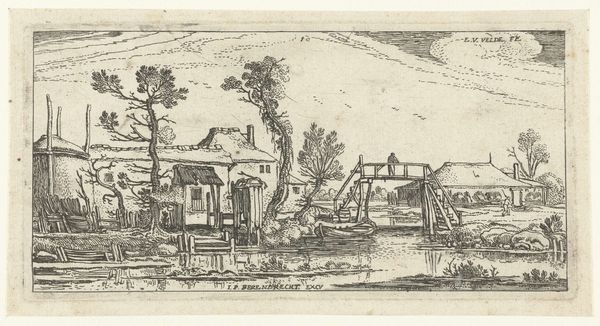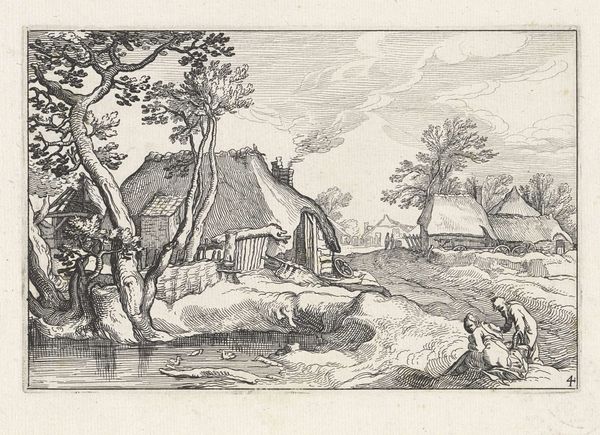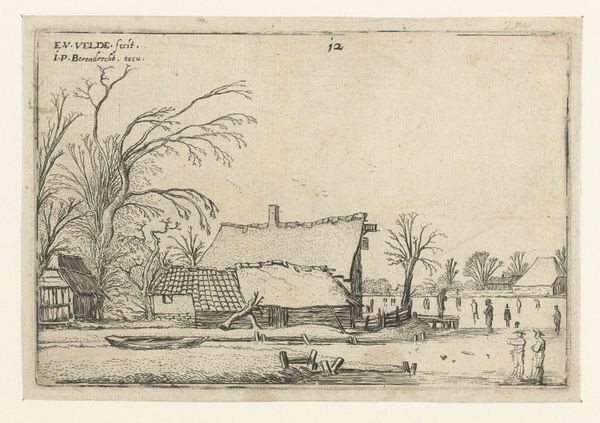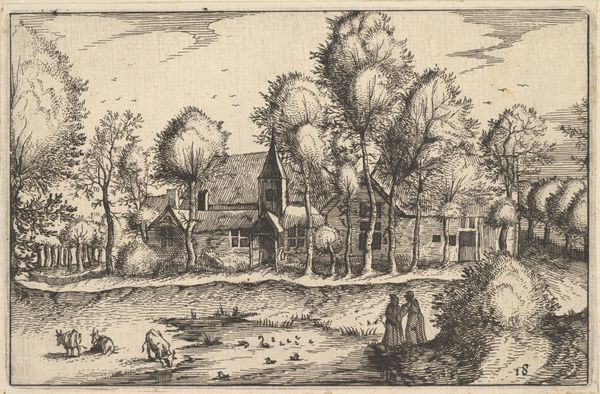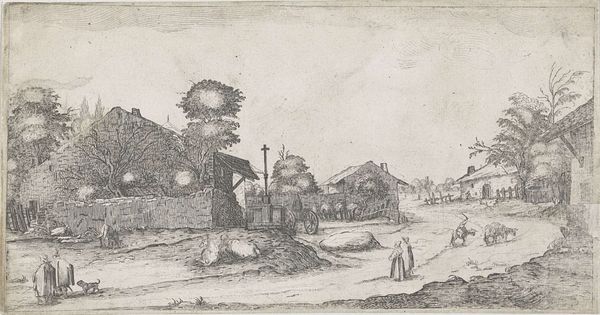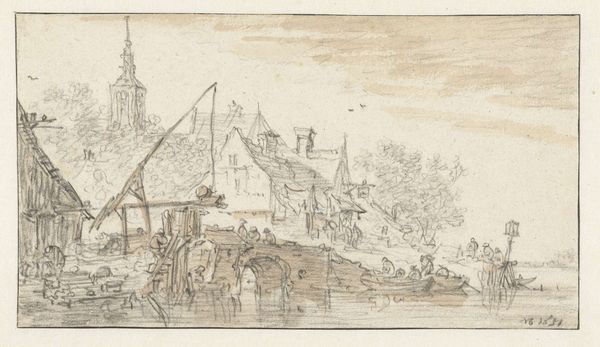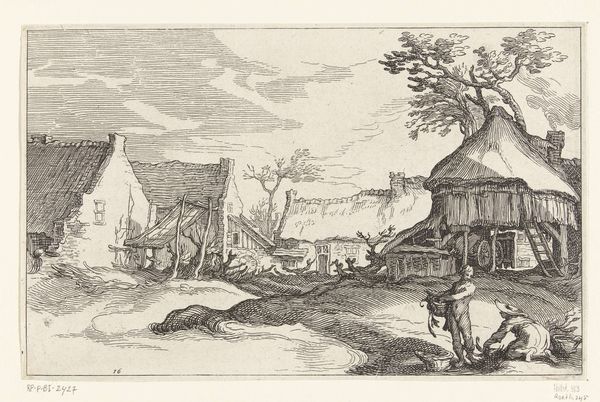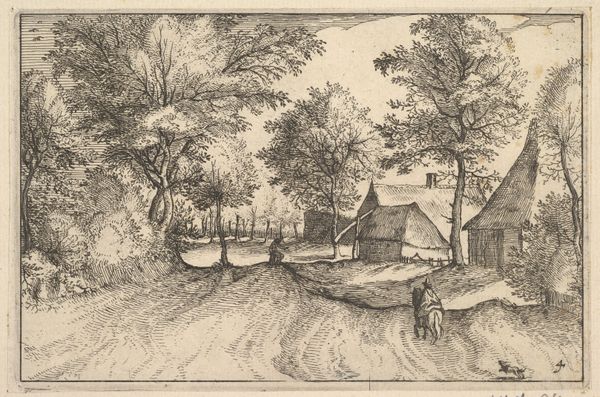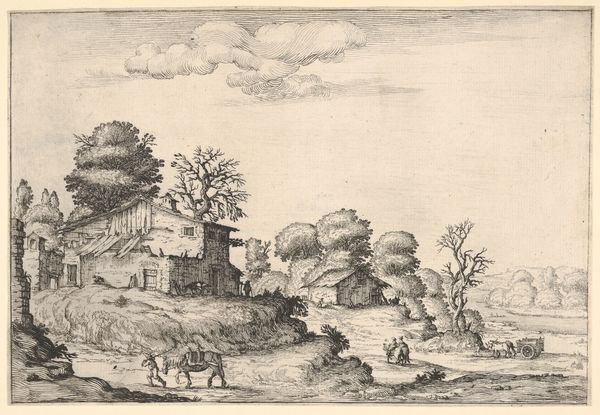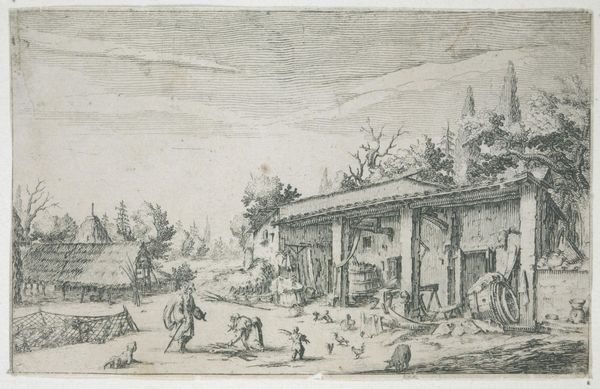
print, etching, engraving
#
dutch-golden-age
# print
#
pen illustration
#
pen sketch
#
etching
#
landscape
#
figuration
#
line
#
genre-painting
#
engraving
#
realism
Dimensions: height 54 mm, width 93 mm
Copyright: Rijks Museum: Open Domain
Editor: This etching, "Farm by Frozen River with Skaters on the Ice," dating back to the Dutch Golden Age, sometime between 1614 and 1617, depicts people enjoying a winter day. There's such a delightful, simple joy emanating from this piece. What stands out to you? Curator: I'm struck by how this seemingly simple genre scene actually speaks volumes about the social context of the Dutch Golden Age. These frozen landscapes weren't just pretty pictures; they were statements. Think about it: this etching, readily reproducible, brought scenes of leisure to a burgeoning middle class, fueling a sense of shared identity and national pride. It depicts a sort of imagined commonality. Does that change your perception of that "simple joy"? Editor: It does. So, you're saying the accessibility of the medium—etching—allowed for wider distribution and fostered a collective Dutch identity around leisure and landscape? Curator: Precisely! Consider also the absence of overt religious or aristocratic patronage. The focus shifted to everyday life, and a market of private buyers shaped artistic production. It’s subtle, but this shift democratized art and imagery in a profound way. Do you notice anything specific about the way the landscape is portrayed in relationship to the figures? Editor: I see how the farmhouse and the bare trees take up a large amount of the picture. That feels interesting since the people skating appear so small compared to those objects. Curator: Absolutely! The relationship between people and the land was clearly something worth paying attention to during the Dutch Golden Age. So what’s your thinking on that point? Editor: I hadn't considered the political implications within a landscape. The scene depicts a seemingly harmless activity, but it reflects a shift in power dynamics and cultural values of that time. I'll never look at a winter scene the same way again! Curator: And hopefully, it encourages you to dig deeper into the history that shaped what and how artists were portraying the world. Remember, images don’t just reflect; they participate in shaping society.
Comments
No comments
Be the first to comment and join the conversation on the ultimate creative platform.
